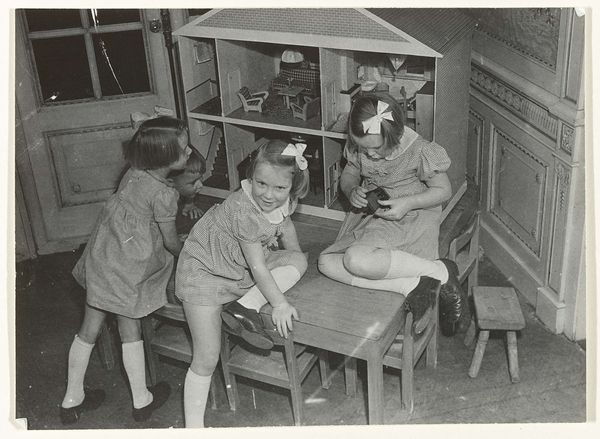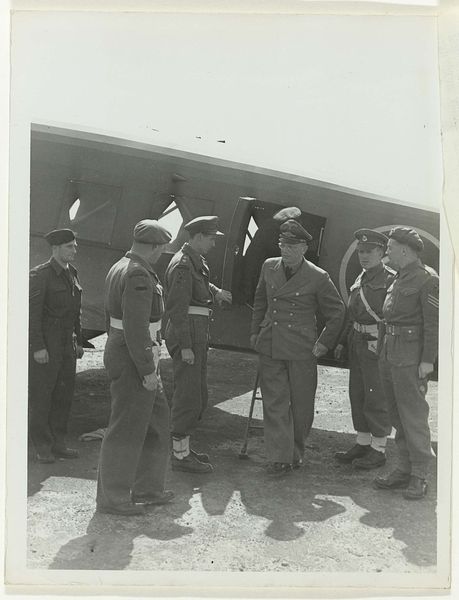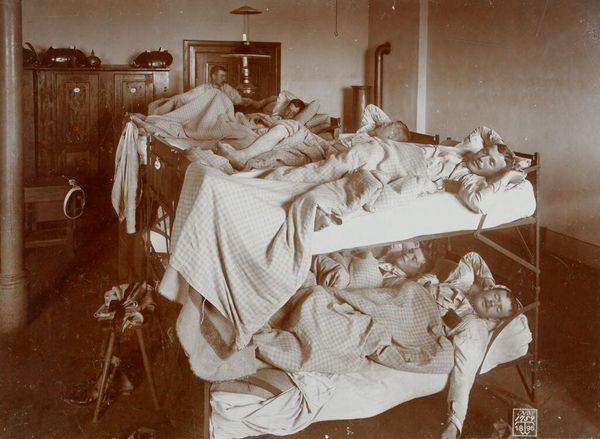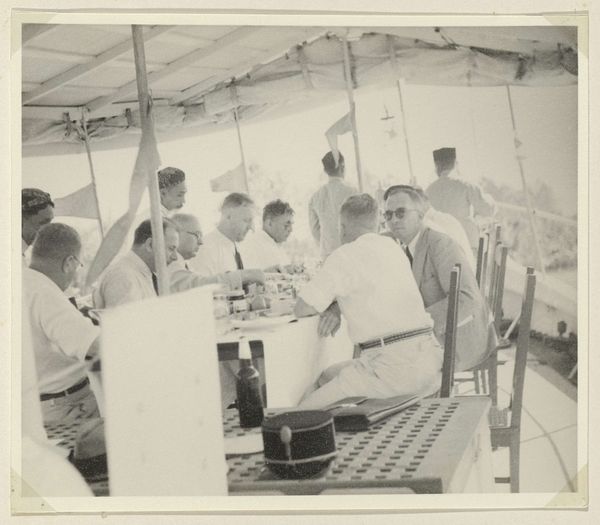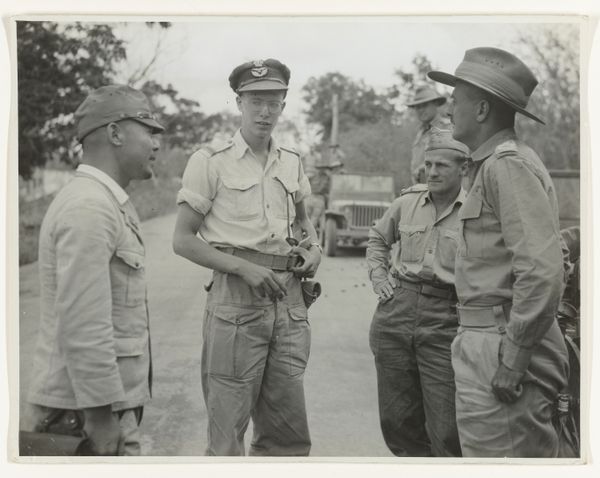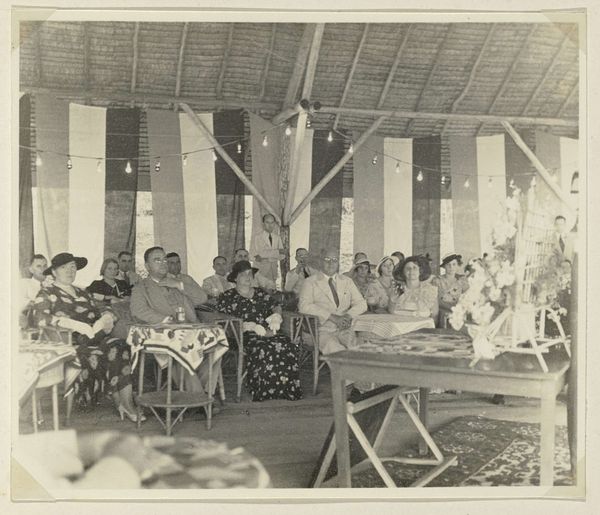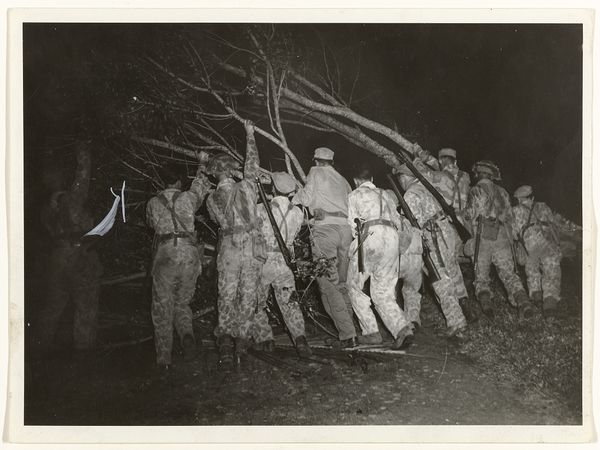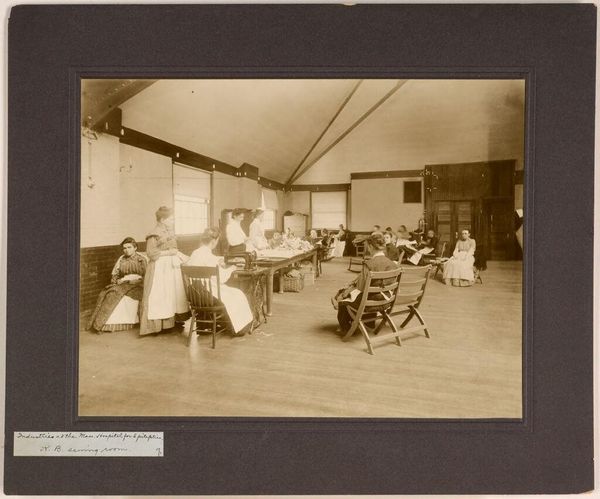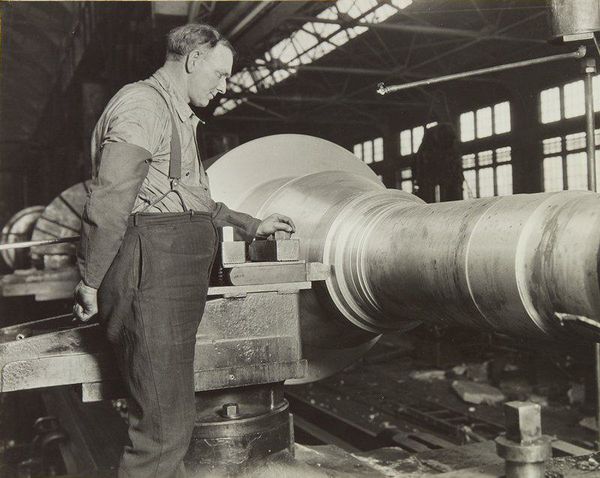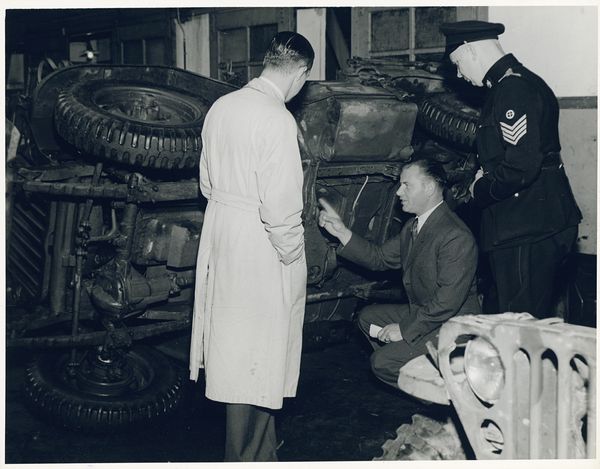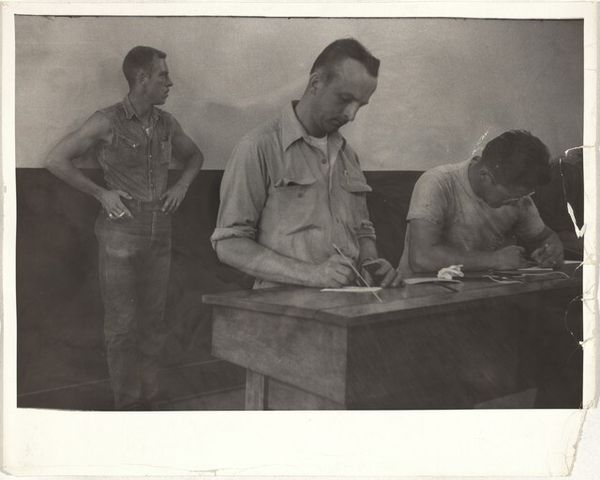
Dimensions: height 12 cm, width 16.8 cm, height 16 cm, width 22.2 cm
Copyright: Rijks Museum: Open Domain
Curator: The starkness is arresting. There's such visible suffering etched on every face. Editor: This gelatin-silver print, dating back to 1945, is titled "Bezoek van Rode Kruis aan Nederlandse ex-krijgsgevangenen" which translates to "Red Cross Visit to Dutch Ex-Prisoners of War". The artist credited is Anefo. The moment it captures, the aftermath it implies... it resonates with enduring trauma. Curator: Yes, precisely! The skeletal figure on the cot contrasts sharply with the starched uniforms surrounding him. What are they really seeing, feeling, as they observe? Are they witnesses, or symbols of a broken system belatedly trying to mend itself? The Red Cross symbol almost mocks the devastation. Editor: As a historical document, its power lies in bearing witness. This image likely circulated widely, shaping public perceptions about the war’s impact on Dutch prisoners. Its realism is intentional; note how it eschews idealized notions of heroism. Instead, the scene reveals brutal consequences of conflict. The neutral tones amplify that stark reality. Curator: Consider too how the backdrop, a roughly constructed hut, anchors us to a specific time and place but it could be *any* theatre of war really, then or now. Its lack of finish represents broken infrastructure and shattered dreams—archetypes easily understood, aren't they? And see how the figures' body language seems almost detached... what does *that* mean? Editor: The image prompts essential questions about responsibility and human capacity for empathy—then *and* now. And of course, it is deeply unsettling how easily it could depict modern day suffering: it could come from any time after widespread photography became prevalent. Curator: It strips bare our collective guilt and challenges our ideas on both survival *and* recovery after global trauma. Looking at it that way it carries great historical and symbolic heft. Editor: Indeed. The image serves not only as a record of a specific historical event, but also a continuing call to consider what roles individuals play when the world itself is collapsing.
Comments
No comments
Be the first to comment and join the conversation on the ultimate creative platform.
